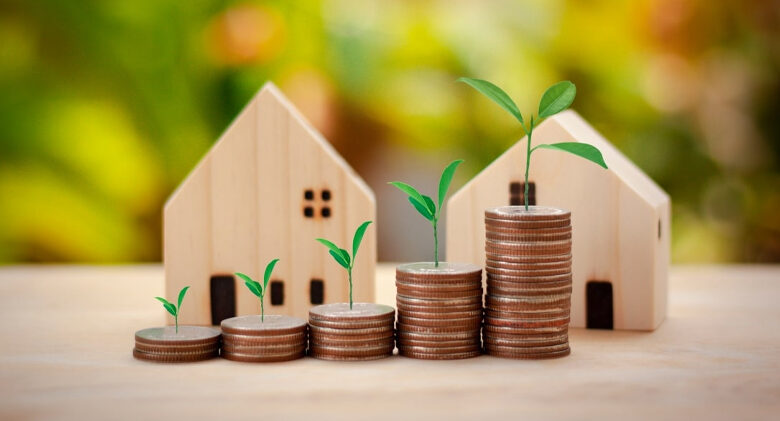
As the world grapples with the urgent need to combat climate change, India is steadily embracing sustainability in its housing sector. A growing trend in this movement is the rise of green housing loans, a financial product designed to promote eco-friendly homeownership. These loans are not only transforming the way Indians build and buy homes but are also paving the way for a greener and more sustainable future. With government support, financial incentives, and increasing awareness among homebuyers, green housing loans are poised to become a cornerstone of sustainable development in India.
What Are Green Housing Loans?
Green housing loans are specialized financial products that support the purchase, construction, or renovation of homes with environmentally friendly features. Unlike conventional home loans, they focus on financing properties that meet specific green building standards, such as energy efficiency, renewable energy integration, and sustainable construction practices.These loans often come with benefits like:
- Lower interest rates.
- Tax incentives.
- Extended repayment periods.
- Subsidies for green certifications or renewable energy installations.
The goal is to make sustainable housing more accessible and affordable while encouraging homeowners to adopt eco-friendly practices.
Why Are Green Housing Loans Gaining Popularity?
The rise of green housing loans in India can be attributed to several factors:
1. Growing Environmental Awareness
With climate change becoming a pressing global issue, Indians are increasingly recognizing the importance of reducing their carbon footprint. According to reports, India ranks third globally in the number of LEED-certified green buildings, reflecting a growing commitment to sustainable construction. Green housing loans align with this shift by incentivizing eco-friendly practices.
2. Financial Benefits
Green homes offer significant long-term savings on utility bills due to energy-efficient designs and technologies. For example, The Energy and Resources Institute (TERI) estimates that adopting green building practices in urban India could save 8,400 megawatts of electricity annually—enough to meet the lighting needs of 550,000 homes each year.
3. Government Support
The Indian government has introduced several policies to promote sustainable housing. Initiatives like the Pradhan Mantri Awas Yojana (PMAY) provide subsidies for eco-friendly construction. Additionally, tax benefits under Sections 80C and 24(b) of the Income Tax Act encourage homebuyers to invest in green properties.
4. Financial Institution Initiatives
Banks and non-banking financial companies (NBFCs) are increasingly offering green housing loans with attractive terms. For instance, State Bank of India (SBI) was one of the first to introduce such loans at lower interest rates. Other institutions have followed suit, recognizing the immense potential of this market.
Key Features of Green Housing Loans
Green housing loans differ from conventional home loans in several ways:
| Aspect | Conventional Home Loans | Green Housing Loans |
|---|---|---|
| Interest Rates | Standard rates based on creditworthiness | Lower rates as an incentive for sustainability |
| Loan Purpose | Purchase or renovation of any property | Financing eco-friendly homes or upgrades |
| Eligibility Criteria | Credit score and income | Environmental certifications plus credit score |
| Tax Benefits | Standard deductions under Sections 80C/24(b) | Additional benefits for energy-efficient homes |
This distinction makes green housing loans an attractive option for environmentally conscious buyers.
Benefits of Green Housing Loans
1. Lower Interest Rates
Many banks offer reduced interest rates on green housing loans as an incentive for adopting sustainable practices. This makes borrowing more affordable for homebuyers.
2. Tax Incentives
Green homeowners can avail themselves of additional tax benefits under various government schemes. For example:
- Section 80EEA offers deductions up to ₹1.5 lakh on interest paid for energy-efficient homes.
- Reduced GST rates apply to eco-friendly construction materials like solar panels and insulation.
3. Long-Term Savings
Green homes reduce electricity and water bills through features like solar panels, rainwater harvesting systems, and energy-efficient appliances. Over time, these savings can offset the initial investment in sustainable technologies.
4. Higher Resale Value
Properties with green certifications often command higher resale values due to their lower operational costs and environmental appeal.
5. Positive Environmental Impact
By promoting renewable energy use and resource conservation, green housing loans contribute to reducing greenhouse gas emissions and conserving natural resources.
Challenges Facing Green Housing Loans
Despite their benefits, green housing loans face several hurdles:
1. High Initial Costs
Eco-friendly materials and technologies often come with higher upfront costs compared to traditional alternatives. While long-term savings are significant, many buyers struggle with the initial investment.
2. Limited Awareness
Not all potential homebuyers are aware of green housing loans or their advantages. This lack of awareness limits adoption rates.
3. Certification Requirements
Obtaining green building certifications like IGBC or LEED can be time-consuming and expensive, adding another layer of complexity for borrowers.
4. Limited Availability
In certain regions, finding certified green properties or builders specializing in sustainable construction can be challenging.
5. Regulatory Challenges
Evolving policies around sustainability standards may create uncertainties for lenders and borrowers alike.
Government Initiatives Driving Growth
The Indian government has been instrumental in fostering demand for green housing loans through various initiatives:
- Pradhan Mantri Awas Yojana (PMAY): Offers subsidies for eco-friendly construction.
- National Mission on Sustainable Habitat: Promotes energy-efficient urban planning.
- SRISTI Scheme: Provides subsidies for rooftop solar installations.
- Sovereign Green Bonds: Mobilize funds for green infrastructure projects.
These measures not only incentivize sustainable living but also align with India’s broader climate goals under the Paris Agreement.
Future Prospects
The future of green housing loans in India looks promising due to several factors:
- Increasing Demand: As awareness grows about climate change and sustainability, more homebuyers are likely to opt for eco-friendly properties.
- Technological Advancements: Innovations in construction materials and renewable energy systems will make green homes more affordable.
- Expanded Offerings: More banks and NBFCs are expected to introduce tailored loan products for green housing.
- Policy Support: Continued government incentives will drive adoption rates further.
According to industry experts, the market for green homes could grow exponentially over the next decade as sustainability becomes a key priority for both developers and buyers.




